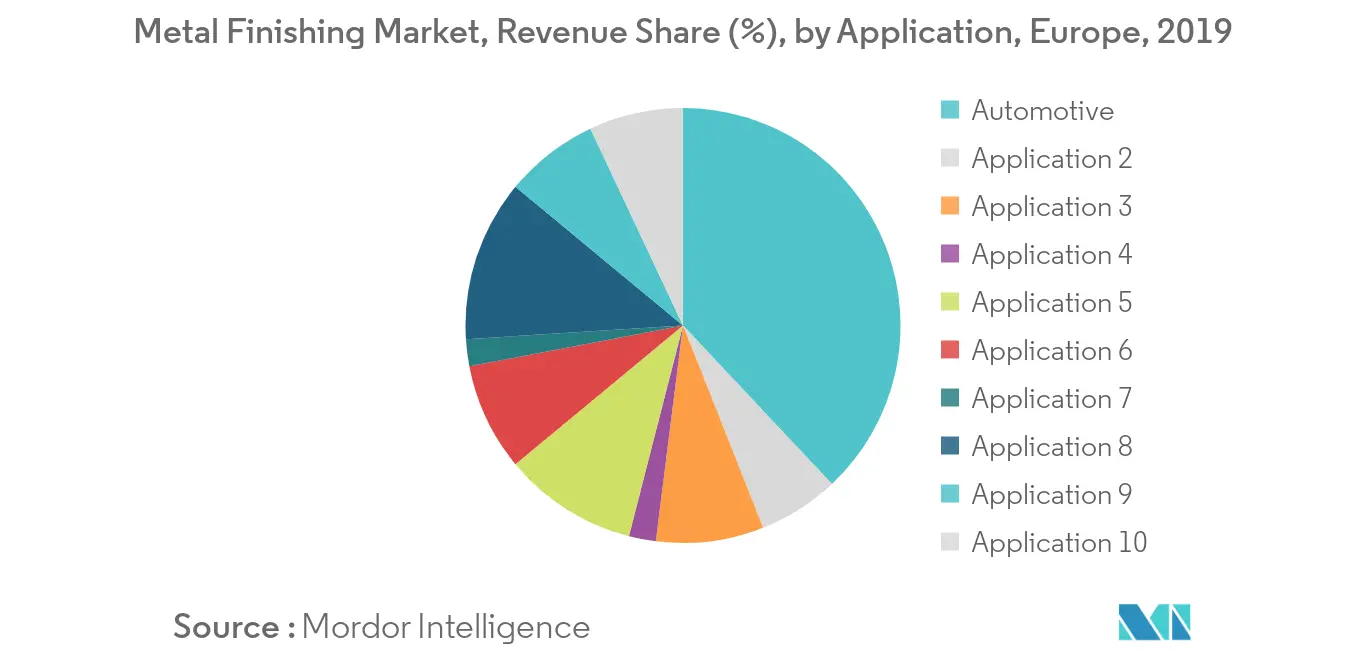Market Trends of Europe Metal Finishing Industry
This section covers the major market trends shaping the Europe Metal Finishing Market according to our research experts:
Automotive Segment to Dominate the Market
- Coatings are applied to various automotive components, majorly to provide aesthetics, corrosion resistance, wear resistance, and lubricity and smooth finish. They also increase the life span or durability of the metal component.
- Metal finishing is one of the prominent methods to provide a protective layer on metal automotive components; it involves applying one or more thin coats of a metal, such as gold, copper, silver, chromium or nickel, to a substrate.
- Automobile manufacturers are always in search of better technologies to protect their products from the relentless forces of corrosion. Vehicles are constantly exposed to the moisture from rain and snow, which can cause the premature demise of metal car parts. Metal finishing comprises the application of a metal coating via inorganic metal finishing, such as electroplating. This prevents automobiles from both red and white rust from reaching the underlying metal surface.
- Metal finishing also includes the application of paints or ceramics. Numerous small and large parts of the automobile require their contact surfaces to be smooth, stress relieved, and without burrs or defects. This enables the automotive engines to achieve a surface with less friction and heat, leading to generation of more horsepower and an overall better performance.
- The market, however, has potential for growth in the long term with the emergence of more technologically developed cars. If such a thing happens, the market for metal finishing will benefit from it.

Germany to Dominate the Market
- Germany leads Europe's automotive market with 41 assembly and engine production plants that contribute to one third of the total automobile production in Europe. Germany, being one of the leading manufacturing bases for the aircraft industry, is the home to manufacturers from different segments, such as equipment manufacturers, material and component suppliers, engine producers, and whole system integrators.
- The German aerospace industry comprises more than 2,300 firms located all around the country, with northern Germany being the area with a higher concentration of firms.
- Germany, being one of the leading manufacturing bases for the aircraft industry, is home to manufacturers from different segments, such as equipment manufacturers, material and component suppliers, engine producers, and whole system integrators.
- The country hosts a large number of production bases for aircraft interior components, MRO (maintenance, repair, and overhaul), and lightweight construction and materials, largely in Bavaria, Bremen, Baden-Württemberg, and Mecklenburg-Vorpommern.
- It has been estimated that over 30 to 35 thousand new aircraft will be operational by the next 20 years, in order to meet the rising aviation demand. Thus, with the increase in production of aircraft, the consumption of metal finishing will increase during the forecast period.
- With the rising demand coming from major end-user industries, the market for metal finishing is projected to grow during the forecast period.


